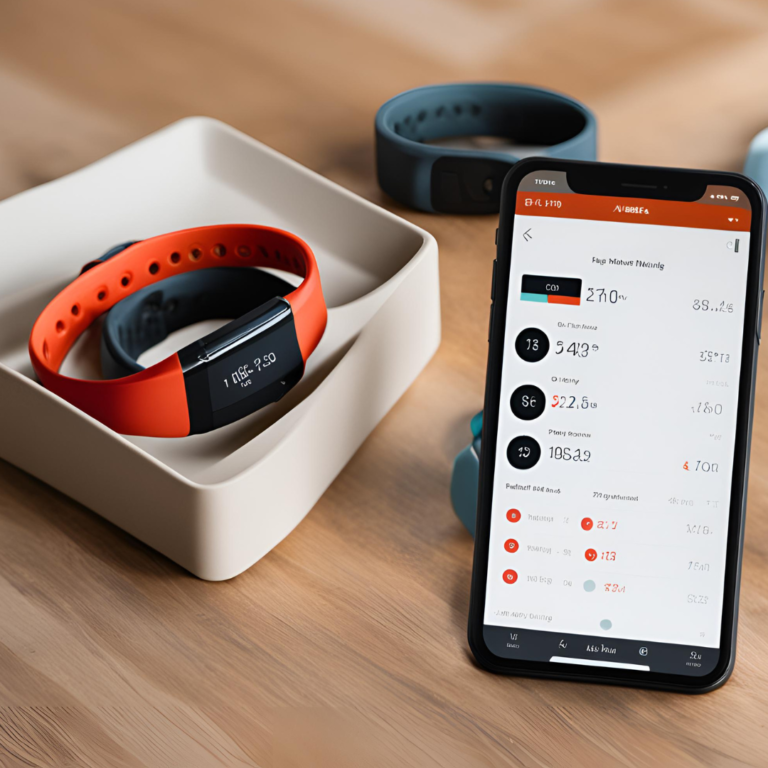The WHOOP Band has become a game-changer for fitness enthusiasts, athletes, and wellness seekers. Known for its ability to provide deep insights into recovery, sleep, and strain, the WHOOP Band is more than just a fitness tracker—it’s a personalized health coach on your wrist. But to truly maximize its potential, pairing it with nutrition tracking can elevate your health and fitness journey to new heights.
In this guide, we’ll explore how to integrate the WHOOP Band with nutrition tracking, why it’s a powerful combination, and practical tips to get started.
Why Pair the WHOOP Band with Nutrition Tracking?
While the WHOOP Band focuses on metrics like heart rate variability (HRV), sleep cycles, recovery scores, and strain, nutrition plays a critical role in optimizing these factors. By combining the data from WHOOP with insights from your diet, you can:
- Enhance Recovery: Proper nutrition supports muscle repair, reduces inflammation, and promotes better sleep, all of which influence WHOOP’s recovery score.
- Improve Performance: Tracking what you eat can help you fuel your workouts more effectively and improve your strain score.
- Optimize Sleep: The WHOOP Band tracks sleep quality, and certain foods or meal timing can have a significant impact on your rest.
- Identify Trends: Combining WHOOP data with a food diary can reveal how specific foods or eating patterns affect your energy, recovery, and overall wellness.
How to Integrate the WHOOP Band with Nutrition Tracking
1. Use a Nutrition Tracking App
To pair the WHOOP Band with nutrition tracking, start by choosing a reliable app to log your meals. Popular options include:
- MyFitnessPal
- Cronometer
- Lose It!
- Lifesum
These apps allow you to track macronutrients (carbs, protein, fat), calories, and even micronutrients like vitamins and minerals.
2. Leverage WHOOP’s Journal Feature
The WHOOP app includes a customizable journal where you can log daily habits, including your nutrition. Use this feature to note:
- Meal timing (e.g., pre-workout, post-workout, late-night snacks)
- Specific foods or supplements (e.g., caffeine, protein shakes, or hydration habits)
- Fasting windows (if you follow intermittent fasting)
By tracking these details, you can correlate your nutrition habits with your recovery, sleep, and strain metrics.
3. Monitor Recovery and Nutrition Together
WHOOP’s recovery score is influenced by factors like sleep quality, HRV, and resting heart rate. To improve this score, pay attention to how your diet supports recovery:
- Protein: Ensure adequate protein intake to aid muscle repair.
- Anti-Inflammatory Foods: Incorporate foods like berries, turmeric, and fatty fish to reduce inflammation.
- Hydration: Dehydration can negatively impact HRV and recovery, so track your water intake.
4. Use WHOOP’s Strain Coach for Workout Fueling
The Strain Coach feature in the WHOOP app helps you optimize workout intensity. Pair it with nutrition tracking to fuel your workouts effectively:
- Pre-Workout: Consume easily digestible carbs and a small amount of protein to sustain energy during high-strain activities.
- Post-Workout: Focus on protein and carbs to replenish glycogen stores and support recovery.
- During Workouts: For prolonged or intense sessions, consider hydration and electrolyte-rich snacks.
5. Align Nutrition with Sleep Insights
WHOOP’s sleep tracking provides insights into how well-rested you are. Certain foods and eating habits can directly influence sleep quality:
- Avoid Late-Night Caffeine: Log caffeine intake to see its effect on your sleep score.
- Watch Meal Timing: Eating large meals close to bedtime can disrupt sleep, so adjust your schedule accordingly.
- Focus on Sleep-Supportive Foods: Include foods like bananas, almonds, and chamomile tea to promote better rest.
6. Experiment and Adjust
Using WHOOP’s data and your nutrition tracker, experiment with different dietary changes to find what works best for you. For example:
- If your recovery score is low after intense workouts, consider increasing your protein intake.
- If sleep quality drops, try avoiding heavy meals or alcohol before bed.
- Monitor how hydration impacts your strain score and energy levels.
The key is to continuously adjust based on the insights you gain from the data.
Tips for Success
- Consistency Is Key: Log your meals and habits daily for accurate correlations.
- Focus on Quality: While tracking macros is important, prioritize whole, nutrient-dense foods over processed options.
- Set Goals: Use WHOOP and nutrition tracking to target specific outcomes, like improved recovery or increased performance.
- Track Supplements: Log supplements like protein powders, creatine, or vitamins to see their impact on your metrics.
The Benefits of Pairing WHOOP with Nutrition Tracking
By combining the WHOOP Band’s insights with detailed nutrition tracking, you can:
- Understand Your Body: Learn how specific foods impact your performance, recovery, and sleep.
- Improve Fitness Results: Align your diet with your training goals for better outcomes.
- Enhance Overall Health: Optimize nutrition to support long-term well-being.
Conclusion
The WHOOP Band is a powerful tool for understanding your body’s performance, recovery, and sleep. When paired with nutrition tracking, it becomes even more effective, helping you make data-driven decisions about your diet and lifestyle. By using WHOOP’s features alongside a reliable nutrition tracker, you can unlock new levels of health, fitness, and performance.
Whether you’re an athlete striving for peak performance or someone aiming to improve daily wellness, this combination is your path to better results. Start tracking, experimenting, and optimizing today!

